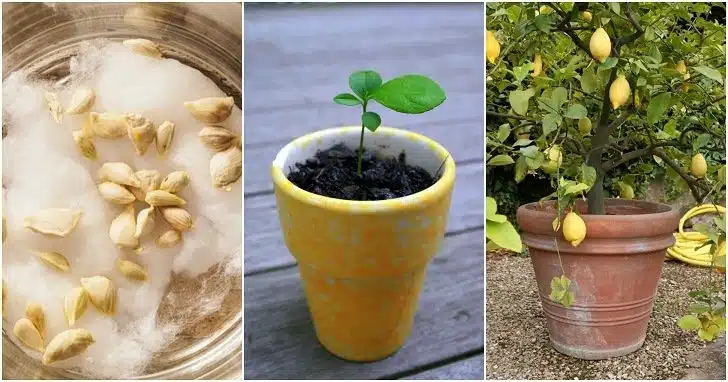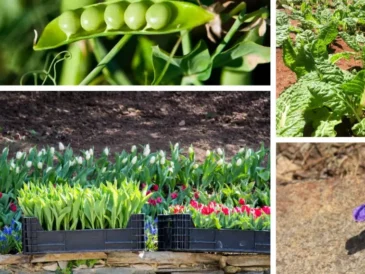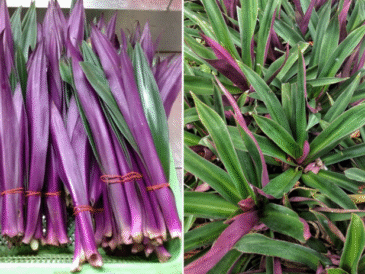Step 6: Feed Your Lemon Tree
Lemon trees are heavy feeders and need regular nutrition to grow large and fruit well.
Best Fertilizer: Use a citrus-specific fertilizer high in nitrogen, with micronutrients like magnesium, zinc, and iron.
Schedule:
- Spring to early fall: Feed every 4–6 weeks
- Winter: Reduce or stop feeding when tree goes semi-dormant
Organic Alternatives:
- Fish emulsion
- Compost tea
- Aged manure (lightly mixed in)
Step 7: Prune for Size and Strength
Proper pruning is essential to grow a giant but manageable lemon tree.
When to Prune:
- Late winter to early spring
- After major harvests
How to Prune:
- Remove suckers (growth from rootstock)
- Trim dead or diseased branches
- Cut crossing or inward-facing branches
- Shape the tree to allow light into the center
- Pinch tips of fast-growing stems to encourage bushier growth
Tip: Don’t remove more than 20% of the canopy at once.
Step 8: Support Pollination
Lemon trees are self-pollinating, but indoor trees may need a little help.
How to Hand-Pollinate (Indoors):
- Use a soft paintbrush or cotton swab
- Gently transfer pollen from one bloom to another
- Do this daily when flowers are open
For outdoor trees, bees and pollinators do the job naturally.
Step 9: Overwintering Lemon Trees (Cold Climates)
If you live in zones 4–8, bring your lemon tree indoors before frost.
Before Bringing Indoors:
- Check for pests like scale or spider mites
- Rinse leaves and let them dry
- Gradually transition over 1–2 weeks to reduce shock
Indoors During Winter:
- Keep near a bright window or use grow lights
- Reduce watering (but don’t let it fully dry out)
- Stop fertilizing until spring
- Maintain humidity with a pebble tray or humidifier
Step 10: Pest and Disease Management
Common Pests:
- Aphids
- Scale insects
- Spider mites
- Whiteflies
Natural Solutions:
- Neem oil spray
- Insecticidal soap
- Rinse leaves with water
- Encourage ladybugs outdoors
Common Diseases:
- Root rot (from overwatering)
- Sooty mold (often from scale or aphids)
- Leaf spot or yellowing from poor drainage or nutrient deficiency
Bonus Tips for Faster Growth and Bigger Lemons
- Rotate your tree weekly indoors to ensure even growth
- Mulch around the base to retain moisture and suppress weeds
- Stake young trees to encourage vertical growth
- Pinch new growth to encourage more side branching and leaves
Harvesting Lemons
Lemons typically take 6–9 months to mature after flowering.
How to Know They’re Ready:
- Color: Fully yellow (or greenish-yellow for Meyer)
- Texture: Slight give when squeezed
- Taste: Slightly tangy, not overly sour
To harvest: Twist gently or cut with pruning shears. Don’t yank!
Growing a Lemon Tree From Seed (Optional Method)
While growing from seed is possible, it takes years to bear fruit and may not grow true to type. For faster, larger trees, start with a grafted nursery plant.
If growing from seed:
- Dry fresh lemon seeds for 1–2 days
- Start in a damp paper towel inside a plastic bag
- Once sprouted, plant in small pots
- Be patient – seedlings take 5–7 years to fruit
Frequently Asked Questions
Can lemon trees survive frost?
No. Lemon trees are not frost-tolerant. In colder zones, grow in containers and bring indoors before the first frost.
How long does it take for a lemon tree to produce fruit?
Grafted lemon trees typically fruit within 2–3 years. Seed-grown trees can take 5–7 years or more.
Why are the leaves turning yellow?
Usually caused by:
- Overwatering
- Nutrient deficiency (especially nitrogen or iron)
- Poor drainage
- Lack of sunlight
Can I grow a lemon tree in an apartment?
Yes. Choose a dwarf Meyer lemon tree, provide plenty of light, use a large container, and prune regularly.
You don’t need a tropical climate to grow a giant, fruitful lemon tree.
Whether you live in a city apartment or a snowy rural town, with the right setup, soil, pruning techniques, and care, you can enjoy the lush green foliage, fragrant blossoms, and bright yellow fruit of your very own lemon tree year after year.




